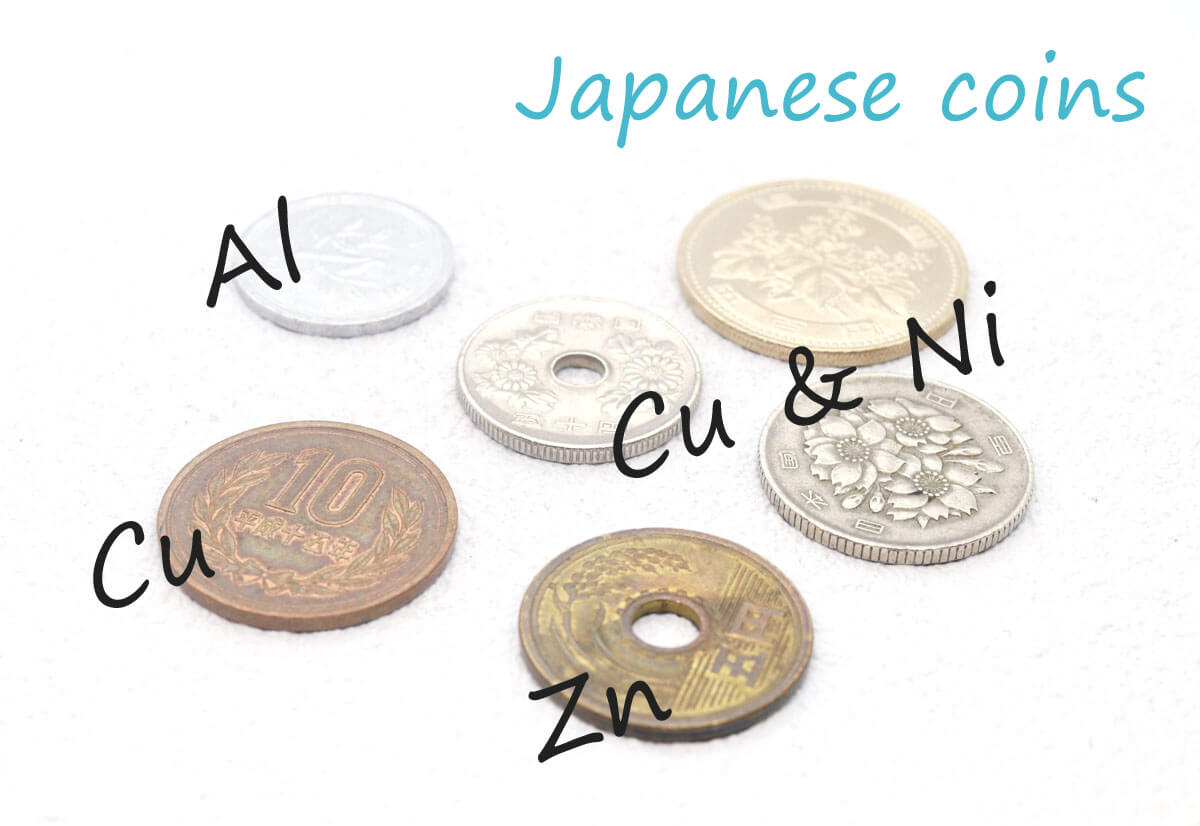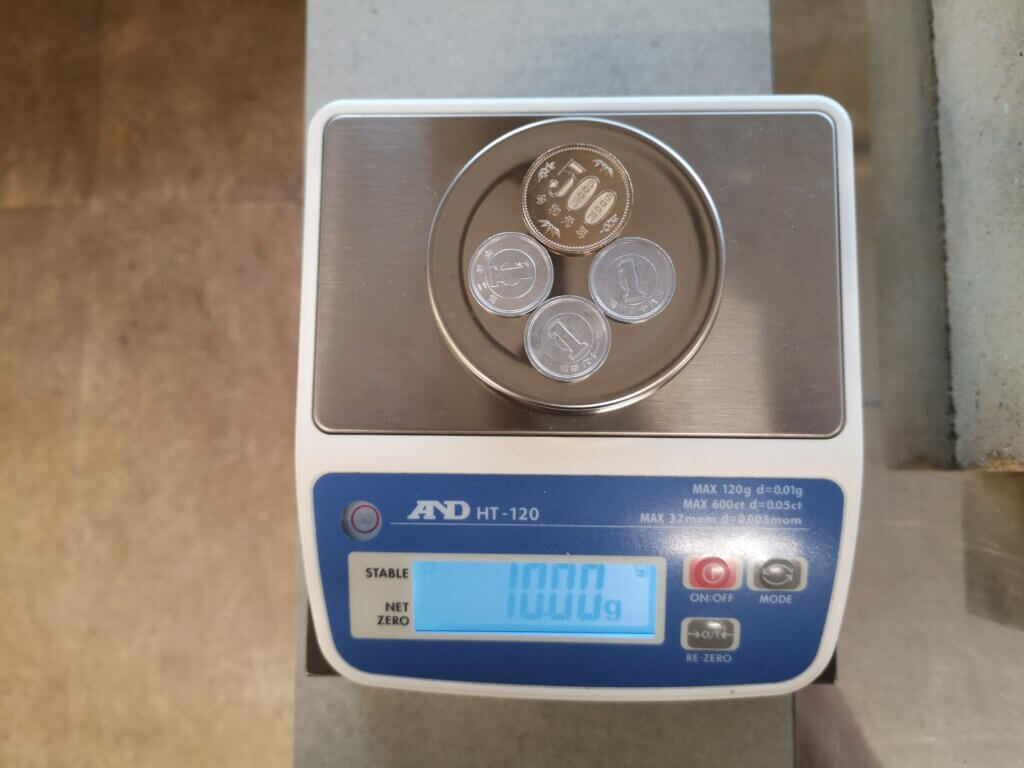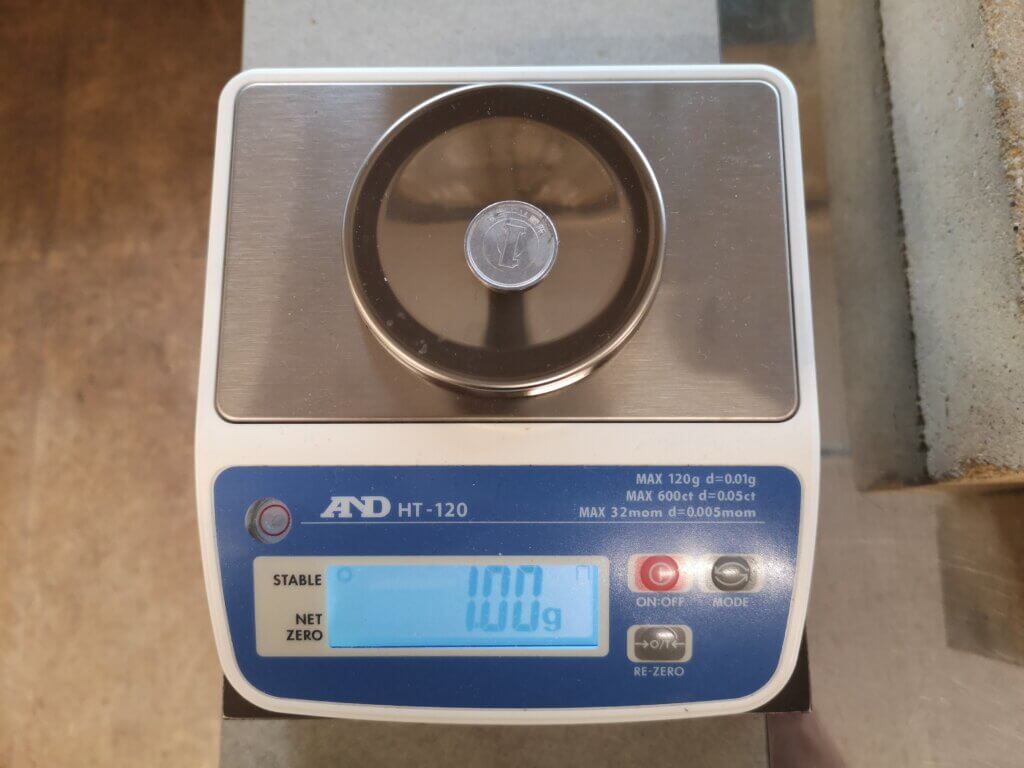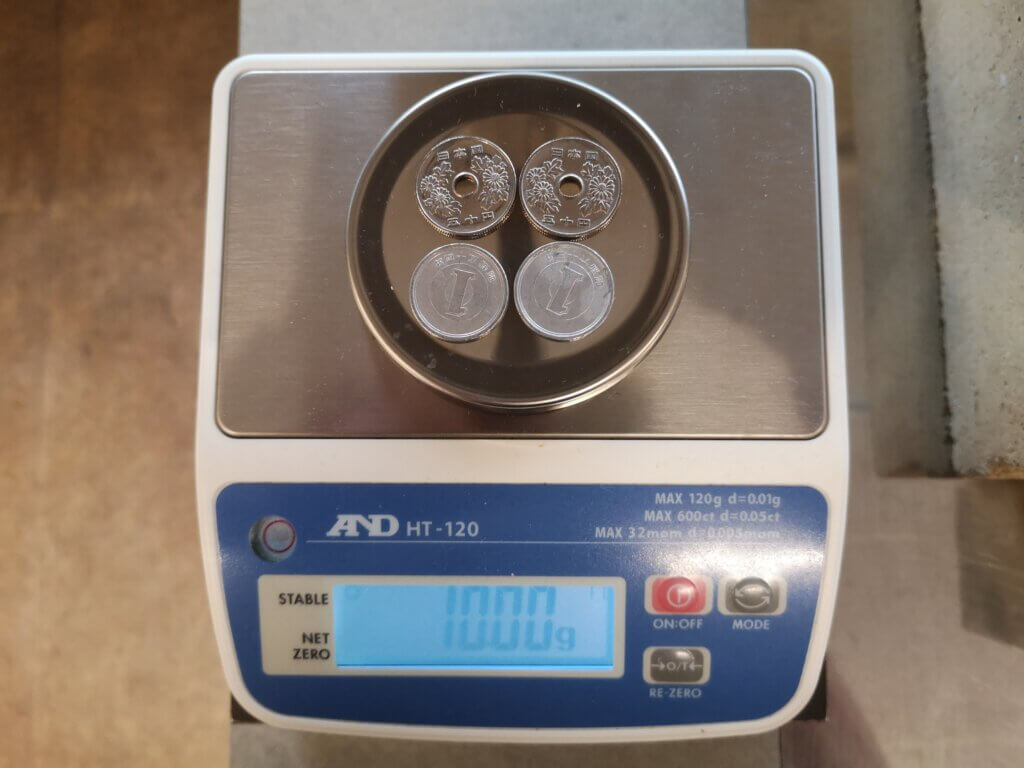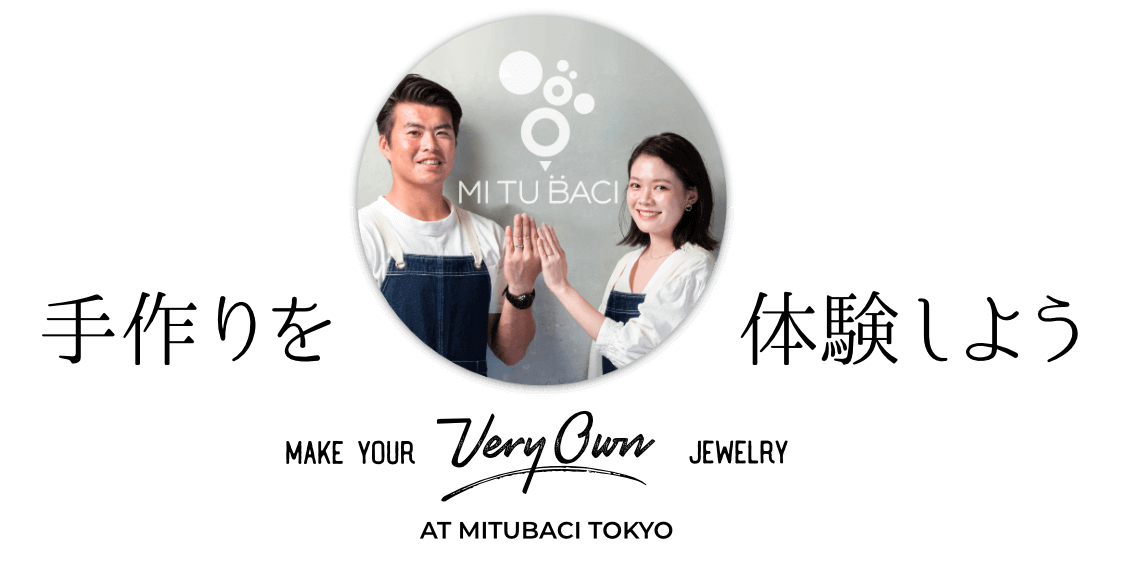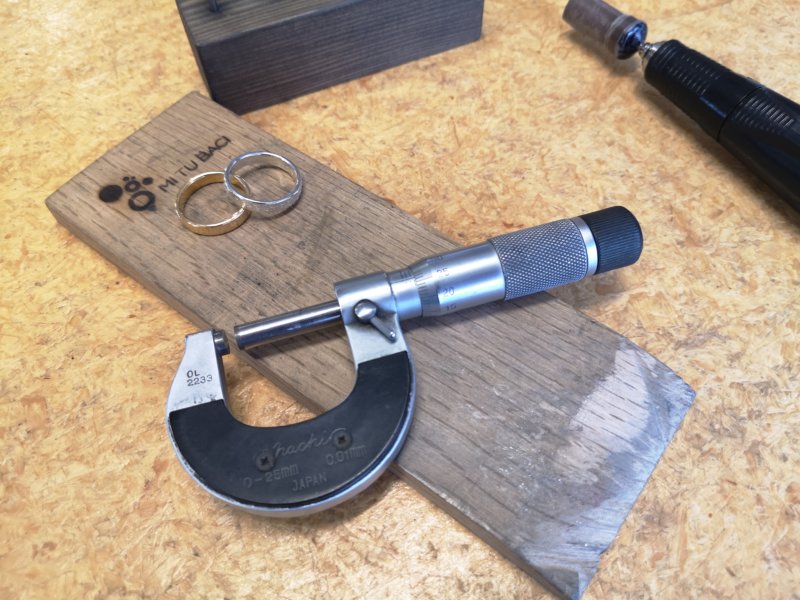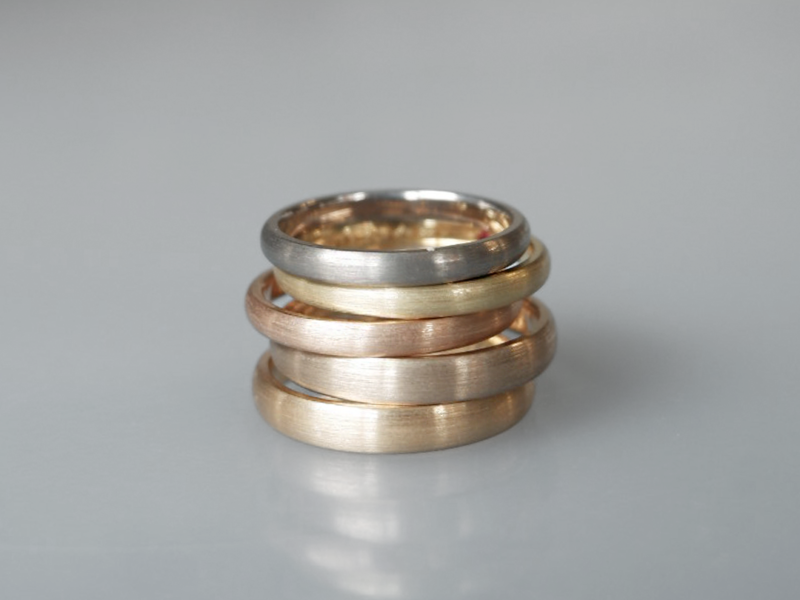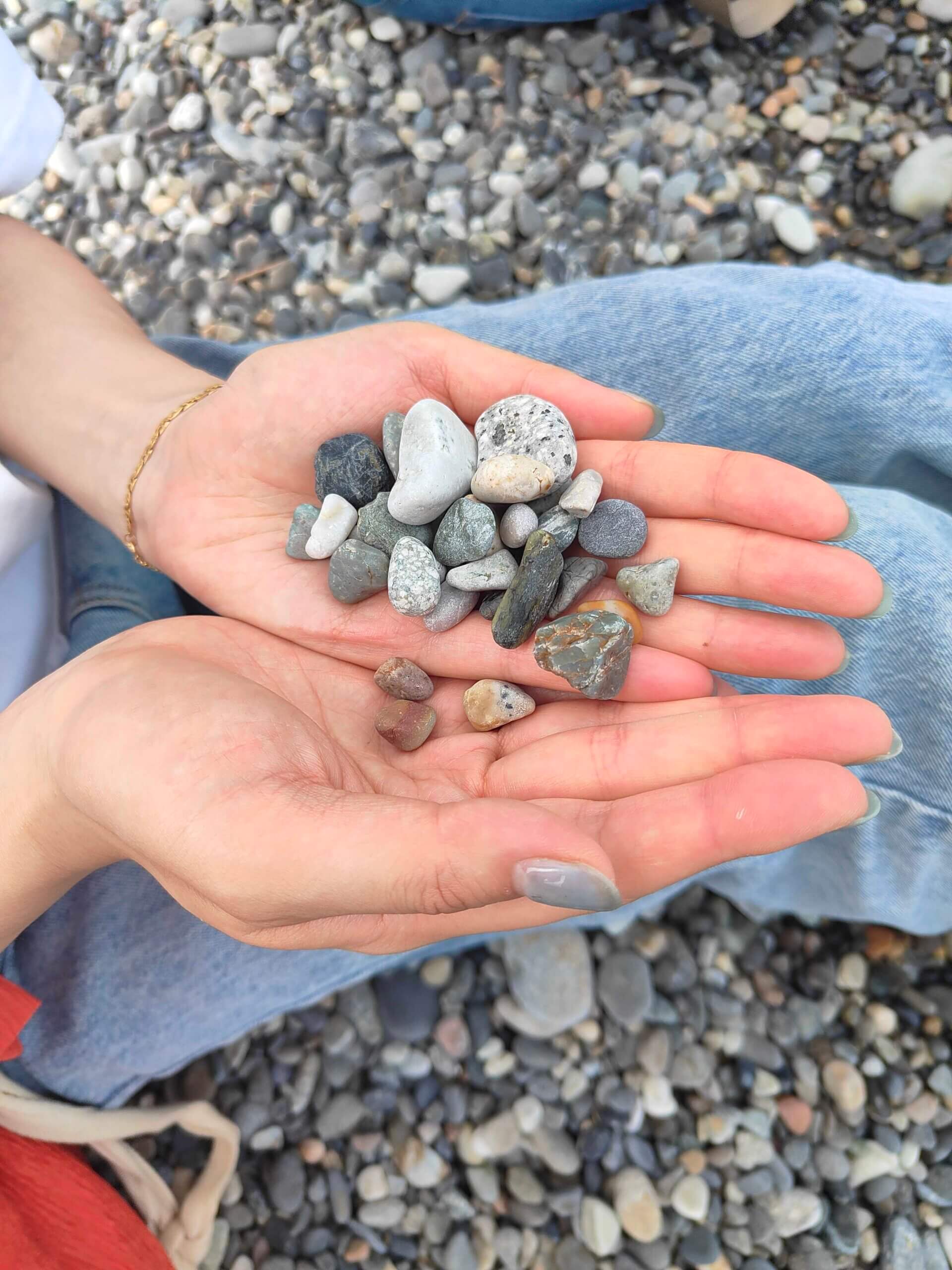Hello, I am Shindo, a craftsman.
In the previous issue, we talked about precious metals, so this time we will talk about the metal most familiar to us in our daily lives: coins.
<To talk about precious metalsPlease click here.>
It is well known that a one-yen coin weighs 1g, but do you know how many grams other coins weigh and what materials they are made of? Surprisingly, even MITUBACI staff member Nishimura did not know.
So let's study together!
◆Materials of coins
| Coin Type | Included materials |
| one-yen coin | (Aluminum) 100% aluminum |
| 5 yen coin | (Brass) 60-70% copper, 40-30% zinc |
| 10 yen coin | (Bronze) 95% copper, 4-3% zinc, 1-2% tin |
| 50 yen coin | (White copper) 75% copper, 25% nickel |
| 100 yen coin | (White copper) 75% copper, 25% nickel |
| 500 yen coin | (Nickel brass) 72% copper, 20% zinc, 8% nickel |
We can see that the one-yen coin is 100% aluminum, while the other coins are alloys.
The alloy of the 50-yen coin and the 100-yen coin are the same, but the 500-yen coin of the same color is a different alloy compound.
I thought the 10-yen coin was 100% copper, but it is a ternary alloy containing zinc and tin.
It is true that 100% copper is too soft.
Previous.Precious Metal StoryAs mentioned in the previous section, metals become harder by mixing with other metals than pure metals.
Coins need to be strong because they are often in contact with many people and objects.
Nickel is the metal used for the index of coins, and I would like to introduce what kind of metal it is.
Nickel (Ni) is used in many applications, including cookware, cell phones, medical equipment, buildings, and power generation.
Nickel-containing materials are chosen for their high corrosion resistance (resistance to rust), durability, and strength at high and low temperatures compared to other materials, which is why they are often used. Nickel is also used in the U.S. 5-cent coin, and the 5-cent coin itself is sometimes called a "nickel.
◆ Coin weight
1 yen coin 1g
5 yen coin 3.75g
10 yen coin 4.5g
50-yen coin 4g
100 yen coin 4.8g
500 yen coin 7g
You may have heard of a 1-yen coin weighing 1 g, but a 500-yen coin weighs 7 g.
Two 10 yen coins + 1 yen coin or two 50 yen coins + 2 yen coins or one 500 yen coin + 3 yen coins equals 10g.
I actually measured it.
◆ Coin diameter (hole diameter)
1 yen coin 20mm
5 yen coin 22mm (hole diameter 5mm)
10 yen coin 23.5mm
50-yen coin 21mm (hole diameter 4mm)
100 yen coin 22.6mm
500 yen coin 26.5mm
Looking at the numbers alone, a one yen coin is 20 mm (2 cm) long. I imagined it to be a little smaller.
Five pieces in a row is 10 cm.
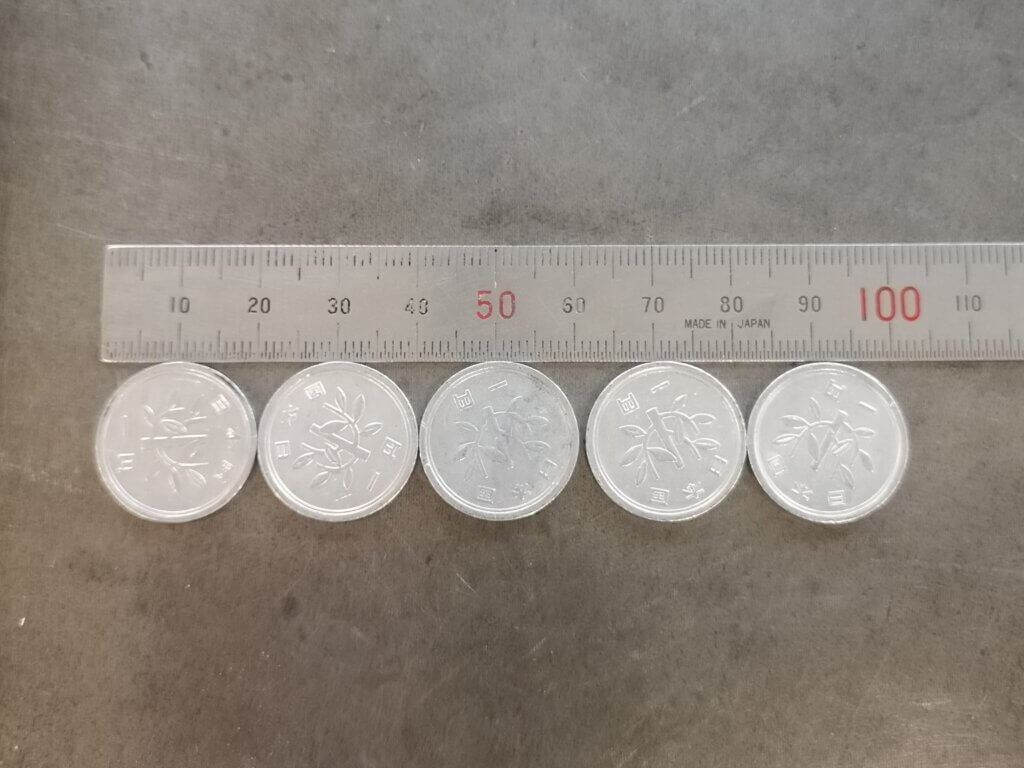
Let's talk a little about diamonds here.
About Diamond Units
Diamonds are described in terms of "carats," but carats are a unit of weight, not diameter.
The word is derived from the Greek word keratien (keration / locust bean), which is said to be uniform in size and weighs almost 0.197g, and was first used by jewelers as a weight for their balances.
The unit of carat was derived from the weight of locust beans, from which the word "carat" was derived: 1 carat = 0.2 g.
However, since this unit is not based on the internationally established International System of Units (SI), its use is permitted under the Japanese Measurement Law only for "calculation of the mass of jewelry.
| Carat Weight (ct) | Weight (g) | Diameter (mm) |
| 0.1 carat Diamond | 0.02g | Approx. 3.0mm |
| 0.2 carat Diamond | 0.04g | Approx. 3.8mm |
| 0.3 carat Diamond | 0.06g | Approx. 4.3mm |
| 0.4 ct. | 0.08g | Approx. 4.8mm |
| 0.5 carat Diamond | 0.1g | Approx. 5.2mm |
| 0.6ct | 0.12g | Approx. 5.5mm |
| 0.7ct | 0.14g | Approx. 5.8mm |
| 0.8ct | 0.16g | Approx. 6.0mm |
| 0.9ct | 0.18g | Approx. 6.3mm |
| 1.0ct | 0.2g | Approx. 6.5mm |
Let's compare the above table with the pore diameters of a 5-yen coin and a 50-yen coin!
(5 yen coin, hole diameter 5 mm → diameter of 0.5 ct diamond)
(50-yen coin, pore diameter 4 mm → diameter of 0.3 ct diamond)
We compared each diamond to see if they are really approximately the same size.
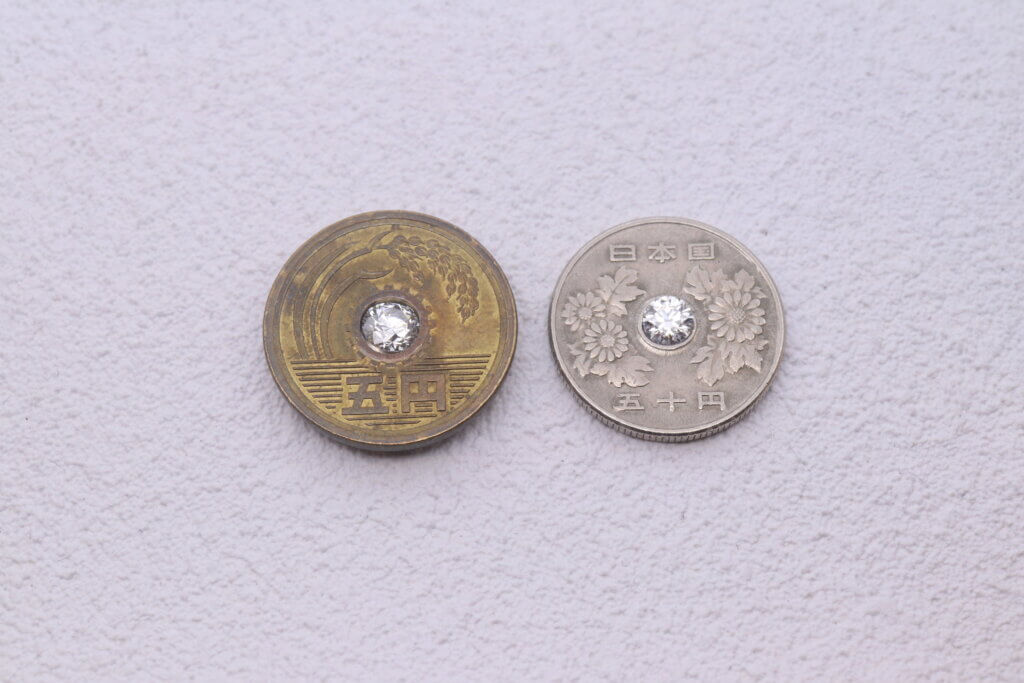
The diamonds shined so brightly that the coins were noticeably dirty, but regardless, they were about the same size.
The hole in the coin actually has a meaning.
Holes on the 5 yen coin and 50 yen coin. The main reason for this is to facilitate identification with other coins.
In particular, 50-yen and 100-yen coins are made of the same material, so they are easily identified by the presence or absence of holes.
◆Currency Thickness
1 yen coin 1.5mm
5 yen coin 1.5mm
10 yen coin 1.5mm
50 yen coin 1.7mm
100 yen coin 1.7mm
500 yen coin 1.8mm
I didn't pay much attention to the thickness of the coins, but different coins have different thicknesses.
◆ Coin Reverses and Tables
The coin with the year written on it is the reverse side, and the one with the pattern on it is the front side. You know how they toss a coin at the beginning of a soccer game to decide the court? This is a bit of a digression from the metal, but it's a tidbit of knowledge to keep in mind!
◆New 500 yen coin
The 500 yen coin will be new from November 2021. I am looking forward to it.
The new coin will use "white copper" in addition to the "nickel brass" used in the previous 500 yen coin.
It looks like a two-color bi-metal, but the center "white copper" has "copper" in between, making it a sandwich structure (clad material).
The letters that appear depending on the direction you look at them and very small letters such as "JAPAN" and "500YEN" seem to have been processed to prevent counterfeiting.

Image of the new 500 yen coin (Courtesy of Ministry of Finance)
These days, we pay more with cards and smartphones than with money, but I think it is interesting to look into the meaning (history) of each coin's design.
In this case, we are talking about coins, but the original plates used for printing banknotes are also made by hand by craftsmen. The word "craftsman's handiwork" is intriguing to me.
Also, if you look at Japanese and foreign money as a craft, you may discover something different.
I'm thinking next time I'll try polishing a dime!
